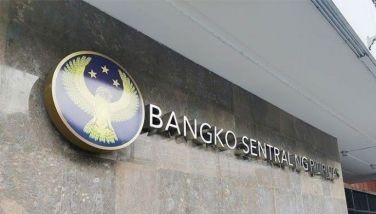Are we really swimming in rice?

The television images of overflowing bodegas and rotting rice from 2008 can only elicit disgust at such callous corruption and incompetence. And that Horn woman saying the rotting rice bloating government warehouses was donated by the United Nations World Food Program (rather than funded by the National Treasury) does not make the situation less criminal. Such waste amidst so much need is simply unjustifiable. The UN could have used that rice to feed hungry people in Africa or Haiti.
Even if you take the corruption issue aside for a moment, you simply have to condemn the past administration for being such poor managers of our scarce resources. Such incompetence should be punished by perpetual disqualification from public office or even banishment to some Abu Sayyaf infested island down South.
But I just hope Lito Banayo has his facts right too and isn’t just still on campaign mode with his “swimming in rice” imagery. His pronouncement that we will stop all importations henceforth is a little scary. One thing I have learned in life is to never make such fearless forecasts specially when you are dependent on something as unpredictable as the weather. I sure hope he is right but what if he is wrong and the P-Noy administration must import rice in the near future or risk dire political consequences?
I became a little more concerned after I got the information that all we have in NFA bodegas nationwide is equivalent to just 56 days supply. We just went through a long dry season and planting had been delayed by at least a month. We are also just in the middle of the usual so-called lean months. If the inventory figure is correct, having two months of rice in the NFA warehouses doesn’t sound excessive to me under those circumstances.
But it would be very interesting to have a full investigation of how NFA carries out its mandate anyway. Economist Romy Bernardo has pointed out studies have shown that less than 25 percent of the poor have access to NFA rice. Worse, Bernardo laments, “a large fraction — maybe more than half — of the rice is sold by the NFA at the official government price to some lucky people who repack the NFA rice and re-sell them at market prices.”
According to a recent World Bank study cited by Bernardo, it costs the NFA an estimated average of P5 to deliver P1 of subsidy to the poor, the big number reflecting the wastes, leakages, and the governance deficit in its administration. Says Bernardo: “If we had shut down NFA last year and diverted the P63 billion to a conditional cash transfer program, we would have been able to cover 100 percent of the country’s poor (against the 25 percent with NFA), with each household receiving 7 times the benefits!”
Change is definitely called for in how we handle rice. The Philippines is gaining international notoriety for causing undue spikes in the international price of rice. We not only buy large quantities of it in the world market, we also announce the large volumes we intend to buy. Since it is a very thin market, we move the market upward every time NFA officials open their mouths about our buying intentions.
I wrote a column a year ago (March 16 09) about a paper written by an international expert that claims NFA’s panic buying provoked the sudden meteoric rice in the world price of rice the previous year. Here are some of the points that study made.
It will be recalled that world rice prices trebled within less than four months and reached a 30-year inflation-adjusted high in the second quarter of 2008. The crisis, according to the expert, was man-made, not the result of natural developments. Indeed, the expert observed, “the rice crisis occurred during a period of record world production and not especially tight stock levels.”
Our government was accused of destabilizing a trading system that had exhibited such resilience over the last two decades. Two other governments were also blamed for the crisis: India and Vietnam for imposing export restrictions.
The expert, Washington DC-based Tom Slayton said that together with India and Vietnam, we caused the unintended consequence of raising world rice prices which threatened both innocent bystanders (low-income rice importers as far away as Africa and Latin America) and, ultimately, poor rice consumers at home.
Politics, not supply and demand, fueled the rice crisis, Slayton concluded. He recalled that only two weeks before the crisis went into high gear, the Philippines paid as much as $1,220 CNF for 25 percent – an increase of over $500 in just over a month – and the trade was speculating that prices might reach $1,500-1,600 in a National Food Authority (NFA) tender which was to be held within a week’s time.
Slayton blamed “ill-considered government policies in a number of countries, especially the Philippines… NFA’s tenders and buying decisions were destabilizing to both the world and local markets.”
Slayton asserted that “some of the government’s decisions may, in part, be explained by political considerations… given President Arroyo’s poor poll ratings.” The expert also faulted our government’s manner of importing rice.
“The nature of NFA’s international buying efforts also contributed to higher prices. Rather than using a mix of smaller tenders and direct negotiations to secure its imports, the food authority held a series of what were essentially monthly ‘mega’ tenders each of at least 500,000 tons with terms that favored Vinafood.
“In these tenders, NFA did not appear to be a particularly tough negotiator. For starters, it acceded to a $70 hike in the January tender – more than double the extent to which local Vietnamese prices had risen in the intervening five weeks since its first purchases. More telling was NFA’s response in the March tender to offers which were about $150 above the spot market.
“Then, instead of rejecting these exorbitant prices, NFA booked all offers. Rather than letting the market take a rest, NFA promptly issued a fourth mega-tender for April 17, again for 500,000 tons – even before asking the successful sellers if they were willing to increase their quantities by 25 percent.
“With the increase in world prices now taking on a dynamic of its own and with the disclosure that NFA would soon be back as a buyer, it is not particularly surprising that all of the firms declined the request. Of course, NFA’s buying behavior tended to confirm suspicions that the government officials – who regularly announced, ‘We have enough rice stocks,’ – were not being candid.”
The other shortcoming of our government the expert noticed is NFA’s reliance on imports rather than local buying. “In 2007, for example, NFA’s local purchases totaled only 32,577 tons – less than .2 percent of the domestic crop – and during the prior five years NFA’s domestic bookings averaged only 191,000 tons or 1.3 percent of the harvest. Imports, in contrast, totaled 1.8 million tons in 2007, after having averaged almost 1.5 million tons during 2002-06.
The study was presented at the International Workshop on Rice Policy and Food Security in Asia, Chiang Mai, Thailand, February 10-12, 2009, sponsored by the Food and Agriculture Organization of the United Nations.
When I asked Art Yap to comment, he scoffed that academics have the benefit of 20/20 hindsight. “But reality shows that in the middle of the heat and passion of ensuring our nation’s food security in 2008, we could not afford to over-indulge in theories nor vacillate before acting decisively. This we tried to do to the best of our abilities with what tools we were given and what conditions we had to live with.”
Going back to the overflowing bodegas that are making Lito Banayo swim in rice, I guess we have to wait and see in the next two months who is right between him and Art Yap. Let us hope the weather cooperates and the farmers are able to plant enough and no big typhoon will come to destroy their plants before they can harvest. That’s the only way Banayo can keep his promise and deny Art Yap the satisfaction of having the last laugh.
Switching channels
This was sent by reader Atty. Sonny Pulgar.
A man watching a basketball game on TV kept switching channels to a raunchy porn featuring a lusty couple having sex.
“I don’t know whether to watch them or the game,” he said to his wife.
“For heaven’s sake, watch them,” his wife said. “You already know how to play basketball!”
Boo Chanco’s e-mail address is [email protected]
- Latest
- Trending






























